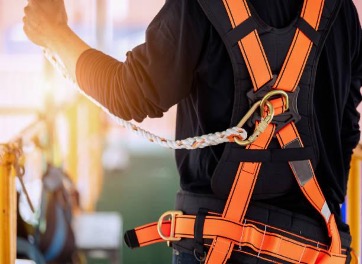

Injuries due to falls from elevated surfaces can cause significant and even fatal injuries, and is routinely one of the leading causes of workplace fatalities each year.
Common examples of work performed from heights include:
- Rooftop maintenance activity
- Working on stage and scene equipment in theaters and concert halls
- Construction activities (such as roofing)
- Climbing and working from ladders
- Working on scaffolding platforms
- Operating Aerial Lifts, or Mobile Elevating Work Platforms (MEWPS) – refer to our Aerial Lifts web page for more information
Working from heights requires careful planning, the proper training and equipment, and the appropriate precautionary measures in place to ensure employees are protected from falls. No UMBC employee or student shall be required or permitted to perform work within 15 feet of an unprotected side or edge without the use of an appropriate fall protection system, where there exists a fall hazard of four (4) feet or greater to a lower level.
Types of Fall Protection:
- Passive Fall Protection – such as guardrails, parapets, or safety nets.
- Personal Fall Protection – such as personal fall arrest systems, fall restraint systems, and positioning systems.
The most effective and appropriate type of fall protection for elevated work depends on a variety of factors. Departments whose employees or students perform elevated tasks must have a designated competent person who is able to plan, review, and determine what type(s) of fall protection is the most appropriate for the tasks being performed.
Managers and employees involved in these types of activities should review the Fall Protection and Working from Heights Procedure to ensure familiarity with the requirements for performing work from heights at UMBC, and to ensure the work is performed in the safest way possible.